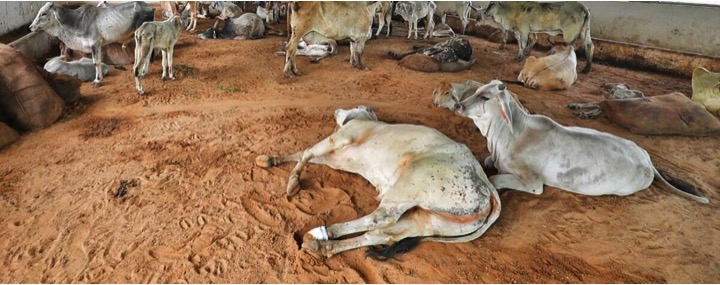The lumpy skin disease (LSD) virus that has killed at least 50,000 cattle in India this year may be structurally different from the version of the virus prevalent in India in 2019, raising questions on whether the new vaccine being developed for safeguarding cattle may be adequately protective.
Scientists at the Council of Scientific and Industrial Research-Institute of Genomics and Integrative Biology (CSIR-IGIB) and the State Disease Diagnostic Centre, Jaipur, analysed five animals with symptoms of the disease and compared genomes of the virus extracted from them. Six genomes (there were multiple genomes from a single animal) showed that it had “little similarity to global genomes” when compared with genetic sequences from earlier outbreaks of the disease.
The analysis of the genomes revealed 177 unique variants, none of which were found in four genome sequences from India belonging to the 2019 outbreak of the disease deposited in GenBank, a popular database.
“Analysis of the viral sequences suggests the genomes from the 2022 outbreak harbour a large number of genetic variations compared to the reference genome and form a distinct lineage,” the authors Lenin Bhatt, Rahul C. Bhoyar, Bani Jolly, Ravi Israni, Harie Vignesh, Vinod Scaria, Sridhar Sivasubbu, say in their paper. The study appears on the preprint server Bioarxiv and is yet to be peer reviewed.
This is significant as Lumpi-ProVacInd, a vaccine developed by the Indian Veterinary Research Institute, and the Indian Council of Agricultural Research’s (ICAR) National Research Centre on Equines is based on LSD virus samples from cattle in Ranchi afflicted in the 2019 outbreak.
However, the experimental trials conducted on animals afflicted in the ongoing 2022 outbreak with the vaccine have revealed encouraging results, ICAR and the Ministry of Agriculture have stated. The vaccine is a live attenuated, or a weakened version of the virus that when injected into animals is expected to stimulate the immune system and protect against a probable infection. Currently, the only vaccines available for the disease are vaccines for goat pox and sheep pox, which are related to the LSD virus.
“That’s the million-dollar question on what the implications of this genome sequencing mean for the vaccine,” Sridhar Sivasubbu of the CSIR-IGIB and one of the scientists associated with the genome sequencing study said.
This specific study, he said, threw no light as there were too few animals tested and only a broader sample of viral genomes spanning several States could answer if the variants identified and analysed in Rajasthan as part of the study were widespread in India.
Another point of concern that the IGIB study raises is that one of the animals appeared to have two different variants of the LSD virus when virus was extracted from its nose as well as from the skin, suggesting that the virus appeared to be able to evolve within a single host. This again speaks to the increased infectivity of the LSD virus in 2022 compared to 2019.
Lumpy skin disease is a contagious viral disease that spreads among cattle through mosquitoes, flies, lice, and wasps by direct contact, and also through contaminated food and water. The disease causes fever and nodules on the skin, and it can be fatal. Symptoms include skin nodules of about two to five centimetres, high fever, reduced milk production, loss of appetite, and watery eyes.
The Centre recently said about 57,000 cattle have died so far due to the disease. The disease has raised concerns over its impact on the dairy business. India is the world’s largest milk producer at about 210 million tonnes annually.
Source : The Hindu Sep 19 2022

